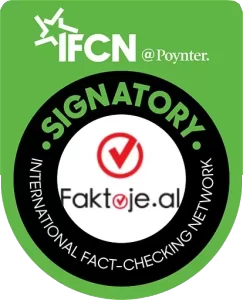Ukraine is seeking armament and has extended its hand to the Western Balkans with a proposal for establishing a regional production line. Once a leader in arms production, Albania now inherits a defunct industry requiring funding for revival. Experts view this project as feasible if NATO member companies and countries contribute. The solution seems strategic, as it would strengthen the industry across the region. Currently, Serbia leads not only in the production of light and heavy weaponry but also in exports, with 52% of the volume heading towards the United States.
Eno Luarasi
The report that Ukrainian President Volodymyr Zelensky called for the establishment of a joint arms production line in the Western Balkan countries was the headline of the Summit between the Western Balkan countries and Ukraine held in Tirana in February of this year.
Currently, Ukraine is facing a shortage of ammunition. Military units deployed to defend Avdiivka not only lacked personnel but also faced a shortage of weapons from the West, contributing to their failure.
Prime Minister Rama welcomed the idea of the Ukrainian President, but admitted that Albania, once a country with an arms industry, does not currently have the conditions to revive it ‘with its own forces’.
‘When it comes to the military industry and arms production, we, like Serbia, Bosnia, or Croatia, do not have a production, a military equipment-producing industry. We want to have it, first of all, for ourselves, and we have been working and are working to find the right agreement, to find the right partners, to revive our old infrastructure, and to make more investments for ourselves. Secondly, the proposal is nothing extraordinary. President Zelensky talked to us about the possibility of cooperation, which means investment, production, and cooperation, and of course, everyone said yes, not just Albania, so this is a process.’- Prime Minister Rama explained.
What does Ukraine want?
Alongside tanks, aircraft, and other military equipment from the West, Ukraine also seeks 155mm shells, NATO’s standard ammunition for Howitzer cannons. Currently, Ukraine needs about 200,000 such shells per month.
During the two years of war in Ukraine, the US has sent around 2 million such shells, but during the hottest phase of the Ukrainian counteroffensive, Kiev was spending 7,000-7,500 shells a day, against the Russians who were only firing 5,000. Towards the end of the year, the situation changed. Ukraine was firing only 2,000 a day, while Russia was firing 10,000, as Russia increased production and began to get supplies from North Korea. These munitions, in many cases, proved to be fatal for the Russians, as they were defective.
The European Union is currently behind in terms of producing these shells and sending them to Ukraine. Currently, the EU expects to produce up to 1.4 million such shells within 2024.
Among the Western Balkan countries, Serbia and Bosnia can produce these types of ammunition, but it is not yet known what their capacity is and, most importantly, the quality of these munitions.
How can the arms industry be ‘revived’ in Albania?
Currently, the Albanian military industry is completely closed and non-functional, unlike other countries in the Western Balkans. Minister of Defense Niko Peleshi stated that in cooperation with NSPA, the NATO Support and Procurement Agency, a report has been prepared to assess the situation of this sector, aiming to attract investors.
Experts also confirm that the technology remaining from the factories in question is very old and out of function. For former Special Forces Commander Colonel Dritan Demiraj, the possibility of reviving this industry lies in investments from NATO allied countries.
‘There is potential, and with American investments, everything can start if there is willingness and Western support. Here where I work and live, I have learned that with a few million dollars of investment, production lines for weapons and ammunition can start, but for the moment, there is nothing concrete’.
Interest in investments in this field has not been lacking, as former Chief of the General Staff of the Armed Forces Major General Jeronim Bazo points out. He recalls that in the early 2000s, representatives from important companies in the field of arms production came to Albania, including Rheinmetall, known for the production of heavy weapons such as tanks, armored vehicles, etc.
‘Companies from Great Britain, Italy, and Turkey also came, but everything remained simply in the exploration phase, without anything concrete being done. We need to decide what we want to do. Do we want an industry to boost the country’s economy, or will we support a strategy to increase defense capabilities‘.
Another problem that needs to be solved to ensure the revival of this industry in Albania is the lack of skilled workers. Those who worked in the former factories are now retired, and the costs would be too high for foreign companies to invest in this sector in our country.
Retrospective
During the communist era, Albania established one of the most powerful and largest armies in the region, and possibly beyond. One of its accomplishments was the development of a military industry, primarily focused on producing ammunition, automatic weapons, explosives, and mines.
The peak of Albania’s military industry at the time was represented by three mechanical plants located in Poliçan, Gramsh, and Mjekës in Elbasan.
The Poliçan Mechanical Plant was founded in 1962 with the goal of meeting the armament needs of the Albanian Armed Forces.
After acquiring a license from China for the production of the Model-56 automatic rifle, Albania began manufacturing its own automatic rifles, based on the Chinese model, but now under the name ASH-78 (Albanian Automatic Rifle).
Poliçan manufactured thousands of these rifles until the late 1990s, even expanding its range to include models such as the ASH78-2, ASH78-3, and ASH82.
In 1984, Poliçan also produced a compact automatic P-84 with 9mm ammunition. The factory continued to operate with reduced departments, entering into small contracts with Turkey for the production of ammunition for light weapons.
The mechanical plant in Gramsh began in 1962, and licensed production with China started in the same year with the “10 Korriku” rifle, in honor of the formation of the General Staff of the Armed Forces.
The explosives plant in Mjekës specialized in the production of explosives and propellants since 1962. In 1982, it began producing powerful explosives under license from ‘BOFORS.’
In 1966, the Aircraft Repair Plant in Kuçovë was completed and became operational.
Where are the countries in the region with the arms industry?
Serbia boasts the largest arms industry in the Western Balkans. In 2021, approximately 371 companies in Serbia were licensed for the export of arms and other military equipment, with a total value of around $1.23 billion. This marked a 20% increase in the number of licenses issued compared to 2020.
The primary destinations for Serbian arms exports included the United States, Bosnia and Herzegovina, Bulgaria, the Czech Republic, Israel, Cyprus, North Macedonia, Turkey, Poland, Montenegro, and Romania. In terms of monetary value, the United States was the largest destination, accounting for $634.19 million, or 52% of these exports.
In 2020, Serbia also manufactured its best tank, the M-84AS1, an upgraded version of the T-84, originally produced in the former Yugoslavia in 1984 and based on the Russian T-72.
Meanwhile, the Nora B-52 and Aleksandër MGS-25 are among the modern self-propelled artillery systems with a caliber of 155mm.
Companies like Sloboda can manufacture medium-caliber ammunition ranging from 20, 30, 37, 40, and 57 mm up to heavy calibers from 76 mm to 155 mm.
Bosnia and Herzegovina also inherited an arms industry from the former Yugoslavia. In the past, about 51% of the arms produced in Yugoslavia came precisely from Bosnia and Herzegovina. Unis Group is currently the largest arms company in Bosnia, producing ammunition ranging from light 5.56 mm to heavy 155 mm.
North Macedonia also inherited a factory from the former Yugoslavia, dating back to 1981 and being the only one in the country. The company can produce ammunition of calibers 9, 5.56, 7.62, and 12.7 mm. Its maximum annual production is estimated to reach 120 million small-caliber rounds.






